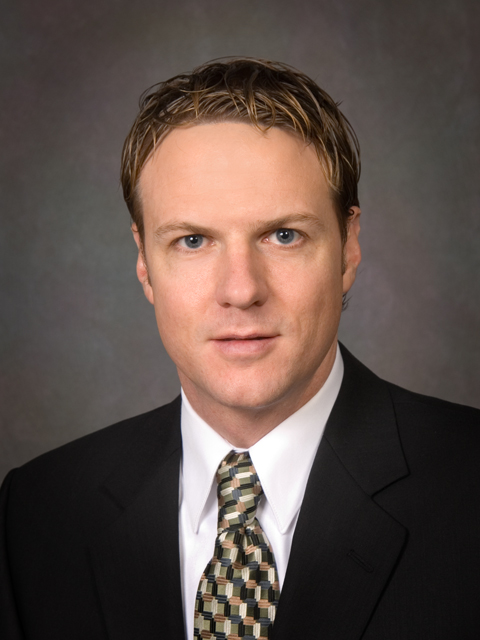Anesthesiology is a subspecialty of medicine dedicated to the perioperative care of patients through the use of anesthetics.1 Approximately 40 million anesthetics are administered each year, 90% of which are administered by anesthesiologists.2 Several types of anesthesia are available, including general anesthesia, monitored anesthesia, regional anesthesia, and local anesthesia.3 While regional and local anesthesia only numb specific parts of the body, general anesthesia induces unconsciousness.
Anesthesiologists are trained in pain relief and management, as well as monitoring patients undergoing surgical, obstetric, or diagnostic procedures.4 It is an anesthesiologist’s responsibility to evaluate a patient’s risk prior to surgery and manage the patient’s condition through to the surgery’s completion; they are also responsible for managing post-anesthesia recovery. Additionally, anesthesiologists diagnose and treat cancer pain problems, critical illnesses, and severe injuries.5
Anesthesiologists can choose to subspecialize in a number of fields, including:
Adult Cardiac Anesthesiology
Critical Care Medicine;
Hospice and Palliative Medicine;
Neurocritical Care;
Pain Medicine;
Pediatric Anesthesiology; and,
In addition to physicians, the anesthesia care team also includes non-physician professionals such as certified registered nurse anesthetists (CRNAs) and certified anesthesiologist assistants (CAAs). CRNAs administer anesthesia to patients before and after surgery for various procedures, including surgical and obstetric procedures, as well as for pain-related illnesses.7 Approximately half of states allow CRNAs to work independently, while the other half require physician supervision.8 CAAs are trained in the delivery and maintenance of anesthesia care as well as advanced patient monitoring techniques. They train and work under physician supervision, and the physician retains responsibility for patient care.9 Currently, CAAs may practice in 21 states and the District of Columbia.10 The American Society of Anesthesiologists (ASA) has taken the position that “both CAAs and nurse anesthetists share identical patient care responsibilities - a view in harmony with their equivalent treatment by the Centers for Medicare and Medicaid Services (CMS).”11
Physicians pursuing specialization in anesthesiology must complete an anesthesiology residency program, which programs are configured in 36-month and 48-month formats; the longer program includes an additional year of education in fundamental clinical medical skills.12 The program includes 12,000 to 16,000 hours of clinical training, covering anesthesia care, pain control, and responding to surgical complications and emergencies.13 Candidates must then pass a series of three certifying examinations administered by the American Board of Anesthesiology (ABA).14 Anesthesiologists seeking subspecialty certification in one of the above areas must complete an additional one-to-two year fellowship and pass a subspecialty exam.15
As a type of advanced practice registered nurse (APRN), CRNAs require more education and training than a registered nurse (RN), including:
A baccalaureate or graduate degree in nursing or a related major;
A valid U.S. RN or APRN license;
One year of full-time work experience as an RN in a critical care setting;
Graduation from an accredited nurse anesthesia program with a master’s degree or higher degree; and,
A passing score on the National Certification Examination.
16
Of note, recently CMS increased the education requirements for CRNAs. Beginning in 2025, CRNAs are required to hold a doctorate degree, rather than just a master’s degree.17
CAAs must similarly possess a premedical background and a baccalaureate degree; they must also complete a comprehensive didactic and clinical program and achieve a master’s degree.18 To become certified, students must pass a national certifying exam.19
Anesthesiology providers render services in a variety of settings, including hospitals (both inpatient and outpatient settings), ambulatory surgery centers (ASCs), pain management clinics, physician offices, and academic institutions. Approximately 50% of all surgical procedures conducted in the U.S. occur in an ASC.20 The number of surgical procedures occurring in an outpatient setting has grown significantly over the last two decades, and accelerated even further during the COVID-19 pandemic.21
Many surgeons are moving away from hospital settings toward ASCs when performing surgical procedures due to several factors, including the preference of both patients and payors. ASCs provide a lower-cost, and often more convenient, alternative for patients.22 Moreover, the average procedure time in ASCs was found to be, on average, 25% shorter, allowing physicians to reduce costs and treat a larger volume of patients.23 These factors have contributed to the increased demand for ASCs (at the expense of hospitals) from patients and anesthesiologists.
Demand for anesthesiology providers and the services they provide is anticipated to increase going forward, due in part to demographic and regulatory forces. By 2030, one in five Americans will be age 65 or older, primarily due to the aging Baby Boomer population.24 Compared to other age groups, this demographic is a disproportionately high utilizer of healthcare services,25 and is believed to account for more than half of all surgical procedures.26 Further, technological advancements have made surgeries safer, with less recovery time, increasing the volume of elective surgical procedures requiring anesthesiologists.27
The COVID-19 pandemic exacerbated the anesthesiology labor shortage, with facilities reporting an anesthesia staffing shortage growing from 35% pre-pandemic to 78% two years post-pandemic.28 On the other hand, the pandemic created significant financial stress for hospitals and health systems due to rising costs, especially related to staffing.29 As a result, some healthcare organizations have deviated away from high-cost anesthesiologists and toward lower-cost providers such as CRNAs and CAAs.30 In fact, the demand for CRNAs and CAAs may be surpassing the demand for anesthesiologists, with the percent change in employment projected to be 40% for CRNAs from 2023 to 2033,31 in contrast to only 4% for physicians.32 CRNAs are the highest-paid non-physician practitioners, yet are paid significantly less than anesthesiologists.33
Demand for CRNAs and CAAs may not diminish the demand for anesthesiologists, however, as they may instead complement each other. For instance, CRNAs represent more than 80% of anesthesia providers in rural counties,34 which then can free up anesthesiologists to work in large hospitals and health systems (typically located in urban and suburban settings) that undertake more complex surgical cases.
This demand for anesthesiology services is outpacing the growth in the number of providers. In 2023, there were approximately 43,095 actively practicing anesthesiologists in the U.S., approximately 28% of whom were aged 65 and older and nearly 88% of whom were age 40 and older.35 As research has found that anesthesiologists retire at a mean age of 62.7, and the number of hours worked decreased with age,36 it is possible that over 25% of anesthesiologists may retire (or significantly reduce their working hours) in the next couple of years. Combined with the increasing demand for anesthesiology services, this may put the U.S. at risk of a continual shortage of anesthesiologists.
There are approximately 71,133 licensed CRNAs in the U.S., an increase of approximately 68.7% since December 2012.37 Additionally, there are approximately 4,181 CAAs in the U.S., an increase of nearly 200% (approximately 9.5% annual growth) since December 2012.38 This growth in the number of CRNAs and CAAs far outpaces that of licensed anesthesiologists, suggesting that there may be a larger supply of these non-physician providers than anesthesiologists in subsequent years.
While 2023 saw a net increase in overall anesthesia staffing of about 400 – approximately 5,200 new anesthesia professionals entered the workforce while nearly 4,800 exited39 – the increasing demand for anesthesiology services will likely exceed this modest growth in supply. Paired with decreasing Medicare reimbursement over the past few years, anesthesiology providers may be heading toward rough waters, requiring them to be exceptionally efficient (in part through the use of technology) in order to survive. Consequently, future installments in this three-part series on the valuation of anesthesiology services will review the reimbursement and regulatory environments in which anesthesiology providers operate and the technological advancements being leveraged by these providers.
“Anesthesia” Cleveland Clinic, https://my.clevelandclinic.org/health/treatments/15286-anesthesia (Accessed 5/21/25).
“The Role of the Anesthesiologist — from Surgical Anesthesia to Critical Care Medicine and Pain Medicine” Texas Society of Anesthesiologists, https://tsa.org/public/anesthesiologist_role.php (Accessed 5/21/25)
“Role of Anesthesiologist” American Society of Anesthesiologists, https://madeforthismoment.asahq.org/anesthesia-101/role-of-physician-anesthesiologist/ (Accessed 5/21/25).
“American Board of Anesthesiology” The American Board of Medical Specialties, https://www.abms.org/board/american-board-of-anesthesiology/ (Accessed 5/21/25).
“Nurse Anesthetist (CRNA)” Cleveland Clinic, https://my.clevelandclinic.org/health/articles/22561-nurse-anesthetist-crna (Accessed 5/21/25).
“CRNA Supervision Requirements by State” By Rebecca Munday, NurseJournal, November 16, 2023, https://nursejournal.org/nurse-anesthetist/crna-supervision-requirements/ (Accessed 5/21/25).
“Statement on Certified Anesthesiologist Assistants (CAAs): Description and Practice” Committee on Anesthesiologist Assistant Education and Practice, American Society of Anesthesiologists, https://www.asahq.org/standards-and-practice-parameters/statement-on-certified-anesthesiologist-assistants-description-and-practice (Accessed 5/21/25).
“Anesthesiologist Assistants” American Society of Anesthesiologists, https://www.asahq.org/advocating-for-you/anesthesiologist-assistants (Accessed 5/21/25).
“ACGME Program Requirements for Graduate Medical Education in Anesthesiology” Accreditation Council for Graduate Medical Education, effective July 1 2023, available at: https://www.acgme.org/globalassets/pfassets/programrequirements/040_anesthesiology_2023.pdf (Accessed 5/21/25).
“The Importance of Physician-Led Anesthesia Care” American Society of Anesthesiologists, https://madeforthismoment.asahq.org/policymakers/ (Accessed 5/21/25).
“Get Certified: Demonstrate your commitment to excellence with the gold standard of certification in anesthesiology” American Board of Anesthesiology, https://www.theaba.org/get-certified/ (Accessed 5/21/25).
“Fellowships” University of Rochester School of Medicine & Dentistry, https://www.urmc.rochester.edu/education/graduate-medical-education/prospective-residents/anesthesiology/fellowships.aspx#:~:text=Applicants%20can%20choose%20between%20a,of%20research%20 experience%20and%20education. (Accessed 5/21/25); “Get Certified: Demonstrate your commitment to excellence with the gold standard of certification in anesthesiology” American Board of Anesthesiology, https://www.theaba.org/get-certified/ (Accessed 5/21/25).
“What to Know About Becoming a CRNA/nurse anesthesiologist” American Association of Nurse Anesthesiology, https://www.aana.com/about-us/about-crnas/become-a-crna/ (Accessed 5/21/25).
“Raising the Bar in CRNA Education: What the 2025 Deadline Means” AMN Healthcare, June 23, 2023, https://www.amnhealthcare.com/blog/physician/locums/raising-the-bar-in-crna-education-what-the-2025-deadline-means/#:~:text=With%20increasing%20complexity%20in%20cases,towards%20requiring%20practice%20doctoral%20degrees. (Accessed 5/21/25).
“Statement on Certified Anesthesiologist Assistants (CAAs): Description and Practice” Committee on Anesthesiologist Assistant Education and Practice, American Society of Anesthesiologists, https://www.asahq.org/standards-and-practice-parameters/statement-on-certified-anesthesiologist-assistants-description-and-practice (Accessed 5/21/25).
“Ambulatory surgery center payment models: current trends and future directions” By Heeren S Makanji, Journal of Spine Surgery, Vol. 5, Suppl. 2 (September 2019), https://pmc.ncbi.nlm.nih.gov/articles/PMC6790812/#:~:text=In%202017%2C%20more%20than%2050,this%20massive%20growth%20are%20ASCs. (Accessed 5/21/25).
“ASCs: A Positive Trend in Health Care” Ambulatory Surgery Center Association, https://www.ascassociation.org/advancingsurgicalcare/aboutascs/industryoverview/apositivetrendinhealthcare (Accessed 5/21/25); “Performance of General Surgical Procedures in Outpatient Settings Before and After Onset of the COVID-19 Pandemic” By Omair A. Shariqu, MBBS, MS, et al., JAMA Network Open, Vol. 6, No. 3 (March 2, 2023), https://jamanetwork.com/journals/jamanetworkopen/fullarticle/2801919?utm_campaign= articlePDF&utm_medium=articlePDFlink&utm_source=articlePDF&utm_content=jamanetworkopen.2023.1198 (Accessed 5/21/25)
“These Surgeries Made the Sharpest Turns to Outpatient Setting After COVID” By Elizabeth Short, MedPage Today, March 3, 2023, https://www.medpagetoday.com/surgery/generalsurgery/103386 (Accessed 5/21/25).
“Procedures Take Less Time At Ambulatory Surgery Centers, Keeping Costs Down And Ability To Meet Demand Up” By Elizabeth Munnich and Stephen T. Parente, Health Affairs, Vol. 33, No. 5 (May 2014), https://www.healthaffairs.org/doi/full/10.1377/hlthaff.2013.1281 (Accessed 5/21/25).
“National 50-state population projections: 2030, 2040, 2050” By Shonel Sen, University of Virginia, July 22, 2024, https://www.coopercenter.org/research/national-50-state-population-projections-2030-2040-2050#:~:text=Between%20now%20and%202050%2C%20the,and%20371%20million%20in%202050. (Accessed 5/21/25).
“NHE Fact Sheet” Centers for Medicare & Medicaid Services, https://www.cms.gov/data-research/statistics-trends-and-reports/national-health-expenditure-data/nhe-fact-sheet#:~:text=Reflects%20broad%20increases%20in%20the%20use%20of,population%20of%2093.1%%20%2D%20an%20unprecedented%20high.&text=Per%20person%20personal%20health%20care%20spending%20for,times%20the%20spending%20per%20working%2Dage%20person%20($9%2C154). (Accessed 5/21/25).
“The Elderly Are Getting Complex Surgeries. Often It Doesn’t End Well.” By Paula Span, The New York Times, June 7, 2019, https://www.nytimes.com/205/21/25/health/elderly-surgery-complications.html (Accessed5/21/25).
“2024 Compensation Trends and Career Tips for Anesthesiologists and CRNAs” OnCall Solutions, https://oncallsolutions.com/blog/2024-compensation-trends-career-tips-anesthesiologists-crnas/ (Accessed 5/21/25).
“Closing the Chasm: Understanding and Addressing the Anesthesia Workforce Supply and Demand Imbalance” By Amr E. Abouleish, et al., Vol. 141, Issue 2 (August 2024), available at: https://anesthesiaexperts.com/uncategorized/closing-chasm-understanding-addressing-anesthesia-workforce-supply-demand-imbalance/ (Accessed 5/21/25).
See e.g., “Wisconsin Hospital Replaces All Anesthesiologists With CRNAs” Medscape, April 5, 2021, https://www.medscape.com/viewarticle/948723#vp_1 (Accessed 5/21/25).
“Nurse Anesthetists, Nurse Midwives, and Nurse Practitioners- Summary” Bureau of Labor Statistics, U.S. Department of Labor, Occupational Outlook Handbook, 2024, https://www.bls.gov/ooh/healthcare/nurse-anesthetists-nurse-midwives-and-nurse-practitioners.htm
(Accessed 5/21/25).
“Physicians and Surgeons - Summary” Bureau of Labor Statistics, U.S. Department of Labor, Occupational Outlook Handbook, 2024, https://www.bls.gov/ooh/healthcare/physicians-and-surgeons.htm (Accessed 5/21/25).
“15 Unveiling 7 of the Highest-Paying Nursing Jobs in the US” CareRev, July 11, 2024, https://www.carerev.com/blog/7-highest-paying-nursing-jobs#:~:text=CRNAs%20collaborate%20with%20healthcare%20teams,nursing%20professionals%20in%20the%20US. (Accessed 5/21/25);
“2024 Compensation Trends and Career Tips for Anesthesiologists and CRNAs” OnCall Solutions, https://oncallsolutions.com/blog/2024-compensation-trends-career-tips-anesthesiologists-crnas/ (Accessed 5/21/25).
“What is the CRNA/nurse anesthesiologist job outlook?” American Association of Nurse Anesthesiology, https://www.aana.com/motion-crna-career-platform/what-is-the-crna-nurse-anesthesiologist-job-outlook/ (Accessed 5/21/25).
“U.S. Physician Workforce Data Dashboard” Association of American Medical Colleges, https://www.aamc.org/data-reports/report/us-physician-workforce-data-dashboard (Accessed 5/21/25).
“United States anesthesiologists over 50: retirement decision making and workforce implications” By Fredrick K. Orkin, et al., Anesthesiology, Vol. 117, No. 5 (November 2012), https://pubmed.ncbi.nlm.nih.gov/23095532/ (Accessed 5/21/25).
“Anesthesia Workforce Trends” Center for Anesthesia Workforce Studies, American Society of Anesthesiologists, January 10, 2025, available at: https://www.asahq.org/-/media/sites/asahq/files/public/research/caws_anesthesia_workforce_trends.pdf (Accessed 5/21/25), p. 5.
“Anesthesia workforce challenges taking center stage” By Tarsilla Moura, OR Manager, August 28, 2024, https://www.ormanager.com/anesthesia-workforce-challenges-taking-center-stage/ (Accessed 5/21/25).





